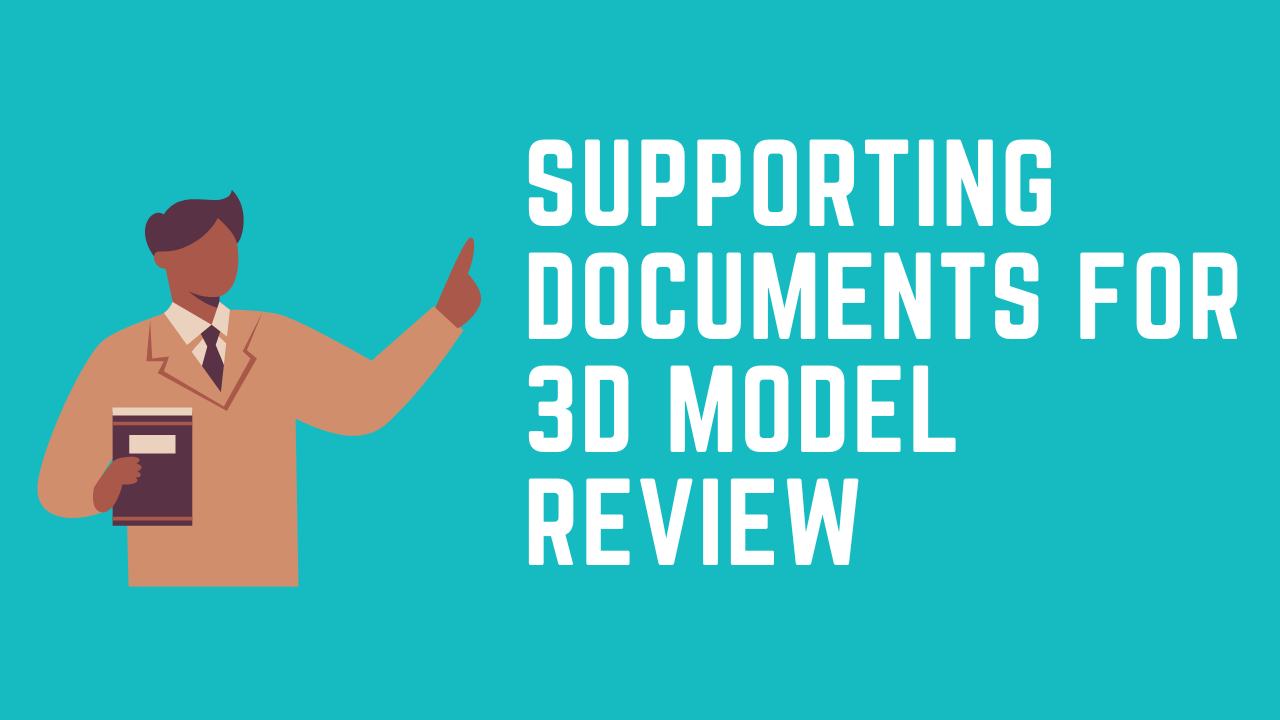Introduction
In the dynamic landscape of modern design and construction projects, 3D modeling has become a cornerstone for visualizing ideas, detecting errors, and ensuring optimal project outcomes. An integral part of the 3D modeling process is the review stage, which involves various stakeholders coming together to analyze, validate, and refine the proposed designs. However, a successful 3D model review requires more than just the model itself. This article delves into the crucial supporting documents, participant roles, and responsibilities that underpin a comprehensive 3D model review process.
Table of Contents
Don’t miss the Complete Course on Piping Engineering: Check Now
By EPCLand.com
Supporting Documents for 3D Model Review
1. Design Specifications and Standards
Before embarking on a 3D model review, it’s imperative to have access to the project’s design specifications and standards. These documents outline the criteria against which the model will be evaluated. They provide a clear understanding of the design intent, industry regulations, and any specific requirements that must be met.
2. Scope of Work and Project Goals
The scope of work and project goals provide context to the 3D model review process. Understanding the project’s objectives, timelines, and desired outcomes helps reviewers align their assessments with the overarching mission. It ensures that the review focuses on areas crucial to achieving project success.
3. Previous Review Reports
For ongoing projects or those with iterative design phases, previous review reports offer insights into the progress made since the last review. These reports highlight issues that were identified and addressed previously, enabling a comparison of the model’s evolution and the resolution of earlier concerns.
4. Vendor/Subcontractor Documentation
In projects involving multiple contributors, such as subcontractors and vendors, their documentation becomes a valuable resource. It includes design changes, equipment specifications, and other relevant information that directly impact the accuracy and completeness of the 3D model.
5. Clash Detection Reports
Clash detection reports identify clashes or conflicts within the 3D model. These reports pinpoint areas where elements intersect or interfere, potentially leading to construction or operational issues. Reviewers can assess these reports to ensure that clashes have been resolved effectively.
6. Material and Equipment Data
Accurate material and equipment data contribute to the realism and reliability of the 3D model. Providing information about the materials’ properties, dimensions, and performance characteristics ensures that the model aligns with the actual construction materials and components.
Participants of 3D Model Review
The success of a 3D model review hinges on the active involvement of various participants, each bringing their expertise and insights to the table.
1. Designers and Engineers
Designers and engineers are responsible for creating the 3D model based on the project’s requirements. They play a vital role in explaining design decisions, addressing technical queries, and making necessary adjustments during the review process.
2. Project Managers
Project managers oversee the entire project and play a critical role in ensuring that the review process aligns with project goals and timelines. They facilitate communication between team members and manage the allocation of resources for necessary revisions.
3. Subject Matter Experts
Subject matter experts contribute specialized knowledge related to specific aspects of the project. Their insights ensure that technical details, compliance with regulations, and industry best practices are upheld during the review.
4. Contractors and Subcontractors
Contractors and subcontractors provide valuable input regarding constructability and feasibility. Their perspective helps identify potential challenges in executing the design and offers solutions that streamline the construction process.
5. Quality Assurance/Quality Control (QA/QC) Team
The QA/QC team ensures that the 3D model adheres to established quality standards. They validate the accuracy of dimensions, verify compliance with design specifications, and confirm that potential clashes have been resolved.
Responsibilities in 3D Model Review
1. Reviewer Responsibilities
Reviewers are tasked with thoroughly assessing the 3D model and associated documents. They identify discrepancies, suggest improvements, and provide constructive feedback. Reviewers ensure that the design aligns with project goals, safety standards, and industry best practices.
2. Communication and Collaboration
All participants in the review process share the responsibility of effective communication and collaboration. This involves providing timely feedback, addressing concerns, and working together to resolve any issues that arise during the review.
3. Iterative Refinement
Responsibility lies in embracing an iterative approach to refinement. As issues are identified and resolved, participants must revisit the model, update documentation, and validate that the changes have been accurately implemented.
4. Documentation of Changes
It’s crucial to document all changes made during the review process. This documentation aids in tracking the evolution of the model, understanding the rationale behind decisions, and ensuring transparency throughout the project lifecycle.
5. Sign-off and Approval
At the conclusion of the 3D model review, participants with decision-making authority must provide sign-off and approval. This indicates that the model aligns with project requirements and is ready for the subsequent phases of the project.
FAQs
Q1: What are supporting documents for 3D model reviews? A1: Supporting documents include design specifications, scope of work, previous review reports, clash detection reports, and vendor/subcontractor documentation.
Q2: Who are the key participants in a 3D model review? A2: Participants include designers, engineers, project managers, subject matter experts, contractors, subcontractors, and the QA/QC team.
Q3: What is the role of reviewers in a 3D model review? A3: Reviewers assess the model, identify discrepancies, provide feedback, and ensure alignment with project goals and standards.
Q4: How does effective communication impact the review process? A4: Effective communication facilitates collaboration, addresses concerns, and ensures timely resolution of issues during the review.
Q5: Why is iterative refinement important in 3D model reviews? A5: Iterative refinement allows for continuous improvement, addressing issues as they arise and ensuring an accurate and comprehensive final model.
In conclusion, supporting documents, participant roles, and responsibilities form the foundation of a successful 3D model review process. By utilizing the right documents, engaging key stakeholders, and upholding clear responsibilities, projects can benefit from enhanced collaboration, minimized errors, and a streamlined path to project success.
Recommended courses (Published on EPCLand)
- Basics of Piping Engineering
- Piping Layout Engineering
- Piping Material Engineering
- Piping Stress Analysis
- Complete Course on Piping Engineering
- Material Requisitions
- Piping Material Specifications
- Valve Material Specifications
Don’t miss the published articles on following:
Related Video
Attempt Quiz
Question 1:
What are some common supporting documents for a 3D model review?
Explanation: Common supporting documents for a 3D model review may include the project schedule, budget, and relevant technical drawings and specifications, but not unrelated items like social media posts or recipe books.
Question 2:
Who are the typical participants in a 3D model review process?
Explanation: The typical participants in a 3D model review process include designers, engineers, stakeholders, and other relevant team members who contribute to the design and development of the project.
Question 3:
What is a common responsibility during a 3D model review?
Explanation: A common responsibility during a 3D model review is identifying design flaws, inconsistencies, and areas that may require improvements or modifications to ensure the accuracy and quality of the final product.
Question 4:
Which of the following is NOT a key aspect of responsibilities in a 3D model review?
Explanation: Ordering office supplies is not a key aspect of responsibilities in a 3D model review. The other options, such as ensuring compliance, collaborating, and providing feedback, are important tasks in the review process.
Question 5:
What is the primary goal of a 3D model review?
Explanation: The primary goal of a 3D model review is to ensure the accuracy, quality, and integrity of the design, identifying and addressing any issues or improvements needed for a successful project outcome.



